Liag na Manach - ‘The Great Stone of the Monks’
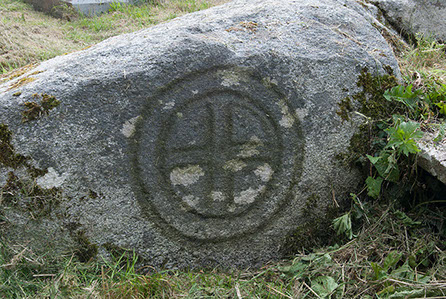
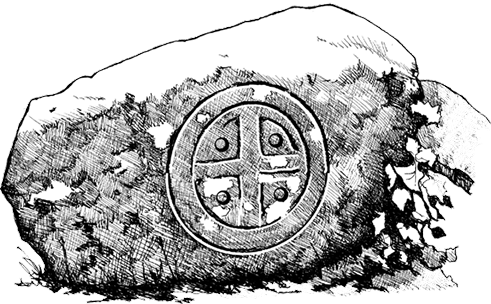
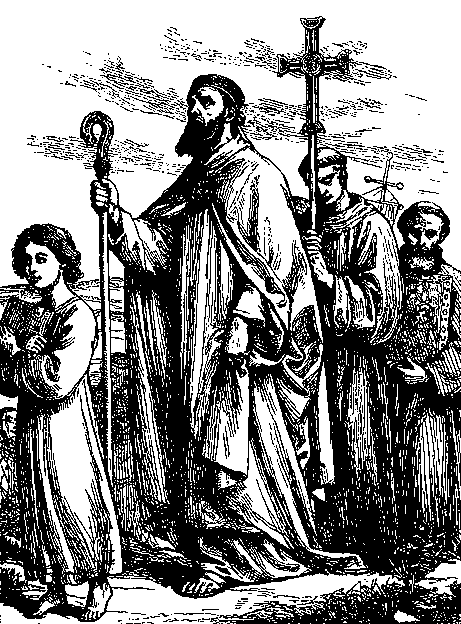 Situated within the confines of modern Leigue Cemetery stand the conspicuous ruins of the ancient stone church of Kilmore Moy-Leigue is a corruption of the Irish word Liag meaning ‘Large Stone.’ Once referred to as being ‘comparatively big with masonry of the Cyclopean style,’ this stout church gives its name to the parish in which Ballina forms part of.
Situated within the confines of modern Leigue Cemetery stand the conspicuous ruins of the ancient stone church of Kilmore Moy-Leigue is a corruption of the Irish word Liag meaning ‘Large Stone.’ Once referred to as being ‘comparatively big with masonry of the Cyclopean style,’ this stout church gives its name to the parish in which Ballina forms part of.
It is recorded in the Life of St. Patrick that while journeying in this region, Patrick instructed his exhausted disciple Olcan to build himself a church on the spot where his axe should first fall from his shoulder. According to the records, the place where the axe fell was on the upper bank of the River Moy, above the present site of this later stone church of Kilmore Moy, and that it was called Leac Finn Baile - ‘The Townland of the Great White Stone.’ It was here that Patrick “erected” a cross and Olcan built a humble wood and adobe cell, no trace of which exists today: the motif of the axe is suggestive of a wooden structure rather than a stone one.
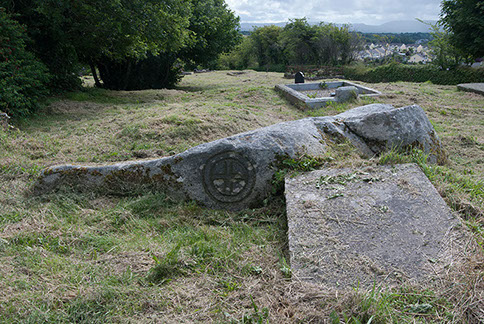 The location was afterwards known by the monks who resided there as Liag na Manach – ‘The Great Stone of the Monks.’ The narrative goes on to tell that the spot where Olcan succeeded, ‘with much sweat,’ in building a simple church “Ubi factus est in gentem magnam” would later grow and come to be known as Cill Mor Uachtair Mhuaidhe - ‘The Great Church of the Upper Moy’.
The location was afterwards known by the monks who resided there as Liag na Manach – ‘The Great Stone of the Monks.’ The narrative goes on to tell that the spot where Olcan succeeded, ‘with much sweat,’ in building a simple church “Ubi factus est in gentem magnam” would later grow and come to be known as Cill Mor Uachtair Mhuaidhe - ‘The Great Church of the Upper Moy’.
Referenced as being one of the oldest Christianised monuments in Ireland, the Liag or Leac - ‘The Great Stone’ itself, is a very large, irregular, flat rock, having on its smooth and nearly perpendicular south-west face, a beautiful well sculpted cross. The site of Liag na Manach or Petra Monachorum – ‘The Stone or Great Stone of the Monks,’ is more than likely the true location of Olcan’s church, while the later stone structure was built in the vicinity.
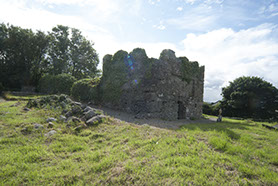 “The old church of Kilmore is now so patched up with repairs of various ages that it is not easy to learn its ancient size and form. The greater part, however, of the south and north walls are in the primitive style of the ancient Irish Churches, being formed of massy, square stones, and resembling in every particular the walls of Kilroe, near Killala, and Bishop Mel’s Church at Ardagh.”
“The old church of Kilmore is now so patched up with repairs of various ages that it is not easy to learn its ancient size and form. The greater part, however, of the south and north walls are in the primitive style of the ancient Irish Churches, being formed of massy, square stones, and resembling in every particular the walls of Kilroe, near Killala, and Bishop Mel’s Church at Ardagh.”
(John O’Donovan, Ballina, May 17, 1838)
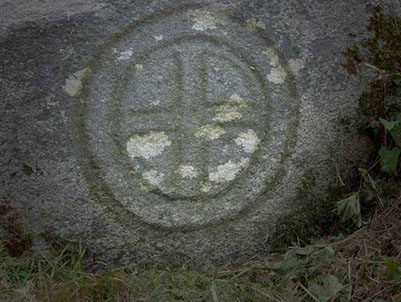 According to the Book of Armagh, the motif of the cross within the circle was given to St. Patrick by St. Attracta of Boyle previous to his visit to this region in the fifth century. The motif is one which is found on some of the oldest stones in Ireland and Liag na Manach is an authentic example of such a cross carved in or about the fifth century-St. Patrick’s time. This particular cross which as we have seen, tradition claims was incised by St. Patrick himself, is clearly visible and the time-worn graveyard within which the stone is situated, proves that there was once an ancient place of Christian worship here. Furthermore, as far as can be ascertained, there is no recorded instance of St. Patrick having erected or inscribed a cross in any place where either he or his disciples did not erect a church. Therefore, it is true to say that there was once a primitive fifth-century church at Liag na Manach, now Leigue, located immediately above the later stone-built church of Kilmore-Moy.
According to the Book of Armagh, the motif of the cross within the circle was given to St. Patrick by St. Attracta of Boyle previous to his visit to this region in the fifth century. The motif is one which is found on some of the oldest stones in Ireland and Liag na Manach is an authentic example of such a cross carved in or about the fifth century-St. Patrick’s time. This particular cross which as we have seen, tradition claims was incised by St. Patrick himself, is clearly visible and the time-worn graveyard within which the stone is situated, proves that there was once an ancient place of Christian worship here. Furthermore, as far as can be ascertained, there is no recorded instance of St. Patrick having erected or inscribed a cross in any place where either he or his disciples did not erect a church. Therefore, it is true to say that there was once a primitive fifth-century church at Liag na Manach, now Leigue, located immediately above the later stone-built church of Kilmore-Moy.
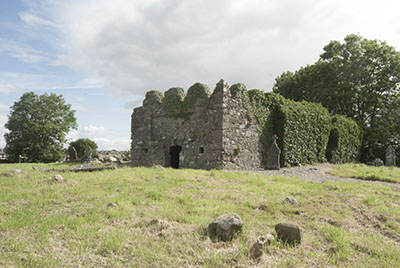 The Liag or ‘Great Stone’ lies to the south west on the hill overlooking the ancient church of Kilmore. Surrounded by two concentric circles of which the exterior is about sixteen inches in diameter, the cross itself is eleven inches in diameter and closely resembles the ancient sculptured cross over the door of St. Fechin’s Church, at Fore, in county Westmeath.
The Liag or ‘Great Stone’ lies to the south west on the hill overlooking the ancient church of Kilmore. Surrounded by two concentric circles of which the exterior is about sixteen inches in diameter, the cross itself is eleven inches in diameter and closely resembles the ancient sculptured cross over the door of St. Fechin’s Church, at Fore, in county Westmeath.
 The official crest of Ballina
The official crest of Ballina
incorporates a replica image
of the incised cross.
St. Patrick’s Well
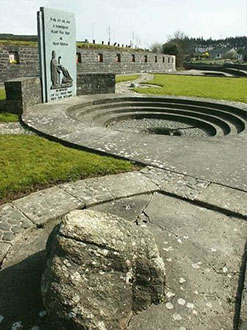 A ‘Holy Well’ which has strong Patrician associations may be found directly opposite Leigue Cemetery. In the great tradition, the well has its own ‘Station’ attached.
A ‘Holy Well’ which has strong Patrician associations may be found directly opposite Leigue Cemetery. In the great tradition, the well has its own ‘Station’ attached.
It is traditionally recorded that at “a still flowing well directly opposite Liag-na-Manach in Tirawley, St. Patrick publicly baptised a prominent local chieftain and ruler of the region, Eochad/Eochodius, who was the son of Dathi/ David, a great monarch of Ireland, himself the son of the illustrious Fiachra. The well is since known as St. Patrick’s Well.”
Moreover, it is further recorded that at the ford which lies close by the well, Patrick, in a “wondrous miracle” restored to life Eochod’s wife Echtra, who had, a short time before, it is claimed, “departed from the living.” The ford was for centuries afterwards known as Ath-Echtra or Vadum Ectra-‘Echtra’s Ford’ and nearby was the site of the sepulchre of this lady which also bears her name.
Traditionally referred to as Fert-Echtra or Tumulus Ectra-‘Eachtra’s Grave,’ it is vernacularly referenced on Ordnance Survey Map 30 as ‘Leaba Liabadoid.’
This once conspicuous structure was originally formed of large stones laid perpendicularly. The West side and the prominent flagstones which were laid horizontally from side to side have long since disappeared, or been removed, and what little survives today are the scant remains of the East side. Mentioned in the Tripartite Life of St. Patrick, the sepulchre is described as “…lying near a ford opposite the church of Kilmore…It lies in the townland of Kilmore to the right of the road as you go from Ballina to the old Church of Kilmore, about 20 perches from the latter.”
To complete the ‘Station’ the pilgrim should first proceed to the statue/plaque of St. Patrick and encircle the monument three times-15 Our Fathers, 15 Hail Marys’ and 15 Glorias should then be recited.
Next proceed to the site directly to the right of the monument and encircle three times-7 Our Fathers, 7 Hail Marys’ and & Glorias should be recited.
From there proceed to the well and encircle three times-15 Our Fathers, 15 Hail Marys and 15 Glorias should be recited.
Leave the well and proceed to the right in a semi-circular fashion to Leaba Liabadoid and encircle 15 times- 15 Our Fathers, 15 Hail Marys and 15 Glorias should be recited.
Return to the well and recite 7 Our Fathers, 7 Hail Marys and 7 Glorias.
The circuit must be completed three times.
According to local tradition, the Station has to be made alternatively but in the following consecutive manner:
- Friday, the following Sunday and the following Friday
- Sunday, Friday, Sunday
- Three times in any one day
- At the conclusion of any of the aforementioned alternatives, the pilgrim must visit Liag na Manach, where, while encircling the stone 15 times, 15 Our Fathers, 15 Hail Marys and 15 Glorias should be recited. Stepping away from the stone the pilgrim should then recite 7 Our Fathers, 7 Hail Marys and 7 Glorias: this completes the Station.
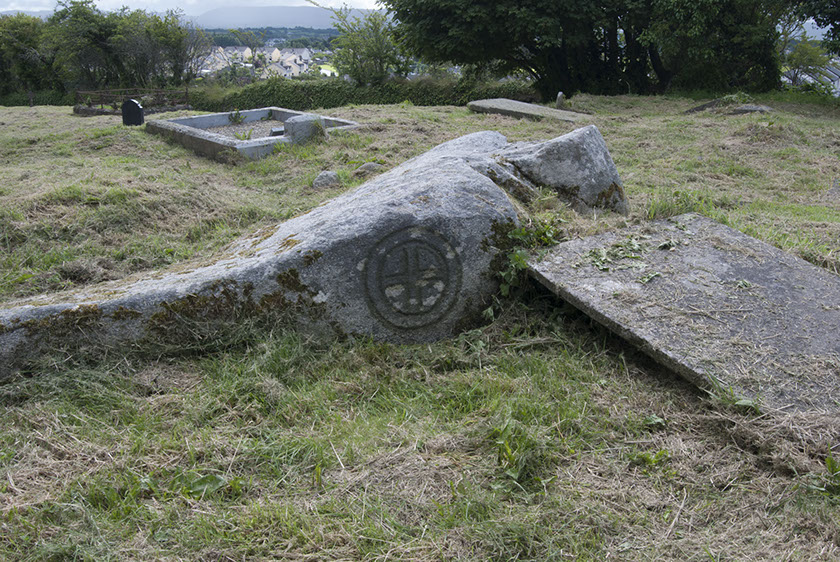
View these photos in a gallery






















